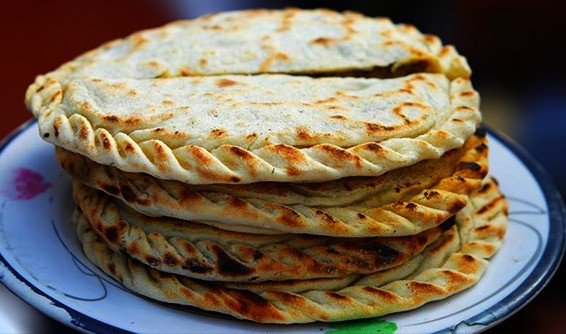Chapshuro is a delicious and flavorful dish that embodies the rich culinary heritage of the Hunza Valley. Often called the “Hunza Pizza,” Chapshuro is a must-try for anyone seeking an authentic taste of this region. This delicious meat-filled pastry is a perfect blend of spices and ingredients, creating a mouthwatering experience that leaves a lasting impression.
A Culinary Gem from Hunza: Chapshuro is more than just a meal; it’s a celebration of Hunza’s vibrant food culture. Made with a savory filling of minced meat, onions, and a medley of spices, all wrapped in a thin layer of dough, this dish is baked to golden perfection. The result is a crispy exterior that gives way to a juicy and flavorful filling, making every bite a delicious journey through the flavors of the Hunza Valley.
The Authentic Chapshuro Experience: To truly enjoy Chapshuro, it’s important to savor it as it’s traditionally prepared in Hunza. The use of local ingredients, including fresh herbs and spices, adds a unique depth of flavor that is both aromatic and delicious. Whether enjoyed as a quick snack or a hearty meal, Chapshuro offers a taste of Hunza’s culinary traditions that you won’t find anywhere else.
Why Chapshuro is a Must-Try: Chapshuro is not just a dish; it’s an experience that showcases the best of Hunza’s culinary artistry. Its rich and flavorful filling, combined with the crispy, golden crust, makes it a favorite among both locals and visitors. The dish’s versatility also means it can be enjoyed at any time of the day, whether you’re on a food adventure in the Hunza Valley or simply recreating the experience at home.
Here’s a basic recipe to get you started:
Ingredients:
For the dough:
- 2 cups all-purpose flour
- 1/2 teaspoon salt
- 1/2 cup water (adjust as needed)
For the filling:
- 1 pound ground beef or lamb
- 1 onion, finely chopped
- 1 tomato, diced
- 1 tablespoon ginger-garlic paste
- 1 teaspoon cumin powder
- 1 teaspoon coriander powder
- 1/2 teaspoon red chili powder
- Salt to taste
- Oil for frying
Instructions:
- Make the dough:
- In a bowl, combine the flour and salt.
- Gradually add water, kneading until a soft, pliable dough forms.
- Cover and let rest for 30 minutes.
- Prepare the filling:
- Heat oil in a pan.
- Add the chopped onion and sauté until golden brown.
- Stir in the ginger-garlic paste and cook for a minute.
- Add the ground meat and cook until browned.
- Incorporate the tomato, cumin powder, coriander powder, red chili powder, and salt.
- Cook until the flavors have combined.
- Assemble the chapshuro:
- Divide the dough into small balls.
- Roll each ball into a thin circle.
- Place a spoonful of the meat filling in the center of each circle.
- Fold the dough over the filling and pinch the edges together to seal.
- Cook the chapshuro:
- Heat oil in a skillet.
- Fry the filled dough balls until golden brown on both sides.
- Serve hot with your favorite dipping sauce, such as mint chutney or tamarind chutney.
Conclusion: If you’re looking to explore the rich flavors of Hunza, Chapshuro is a dish you cannot miss. Its delicious and authentic taste offers a perfect introduction to the region’s culinary delights. So, whether you’re planning a visit to Hunza or simply want to bring a taste of this beautiful region into your kitchen, Chapshuro is the perfect dish to savor.

3 comments
Neque porro quisquam est, qui dolorem ipsum quia dolor sit amet, consectetur, adipisci velit, sed quia non numquam eius modi tempora incidunt ut labore.
Quis autem vel eum iure reprehenderit qui in ea voluptate velit esse quam nihil.
Et harum quidem rerum facilis est et expedita distinctio. Nam libero tempore, cum soluta nobis est eligendi optio cumque nihil impedit quo minus id quod maxime placeat facere.